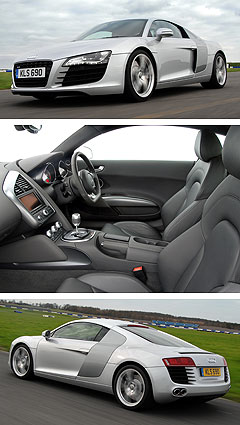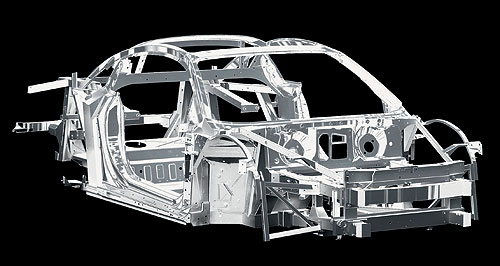Future models - Audi - R8Audi R8 shapes upSupercar diet: Audi will take its weight-saving technology up a notch for the next-generation R8, which already features an aluminium spaceframe. Details emerge of Audi’s second-generation mid-engine R8 supercar for 201420 Sep 2011 AUDI’S second-generation R8 supercar is beginning to shape up as a lightweight superhero, with the Ingolstadt engineers striving for significant weight savings, unprecedented levels of stiffness and strength, and some real-world crash-repair practicalities. The new mid-engined all-wheel drive supercar, due out on the world market in 2014 after a late 2013 unveiling, will boast aluminium spaceframe construction combined with exotic materials like carbon-fibre. It will be built in Neckarsulm, Germany, using experience honed over 20 years of aluminium construction technology pioneered by the A8 luxury car flagship. Among the goals is a vehicle that is some 100kg lighter than the existing R8, which was launched in 2006 and is based on the Lamborghini Gallardo. Currently the Audi supercar ranges from 1560kg for the base V8 Coupe to 1725kg for the V10 Spyder. The advanced mix of aluminium and carbon-fibre materials in key areas of the structure such as the vehicle’s spine and shoulders will result in a world-class body stiffness rating of 40,000Nm per degree, according to company lightweight expert Dr. Lutz-Eike Elend. This is between 15 and 30 per cent better than vehicles that use carbon-fibre in their structure, such as the Ferrari 458 Italia, Lexus LF-A and Porsche 996/997.  Left: Current Audi R8. Left: Current Audi R8.Dr Eland said the R8’s body in white structure will tip the scales at just 198kg, a result that “is better than any vehicle with a carbon-fibre monocoque”. Along with the upcoming production version of the A2 due from 2015, as well as the next-generations of TT (expected earlier) and A8 (2016), a new construction method Audi calls ‘Ultra’ is being devised, which bonds aluminium with carbon-fibre (among other ultra-strong and lightweight fibrous materials). Audi believes this will greatly reduce weight, cost and complexity for mass-production application. “Helping out is targeted application of carbon-fibre on the spine and shoulders … as well as the bonding technology of joining the carbon-fibre parts with the metallic structure … to give the car greater stability,” said Dr Eland. “At Audi, we have garnered a lot of knowledge we have utilised lots of bonding technology as well as mechanical joining technology developed specifically for the aluminium cars we have been building over the last few years.” He said one particular advantage with this sort of bonding technology is the ability to easily repair a vehicle. “It is always something that is critical with a monocoque principle, but with this concept you can always just take out and replace the particular elements – even the (central) tunnel. “In the event of a side collision, you can take the rivets and bonding out and put the new part right back in. “It is part of our overall strategy of utilising carbon-fibre and bringing it within reach of mass-production vehicles and, in order to that, at an early part of the development phase you have to take these things into account. “The Ultra lightweight strategy will also be in other higher-volume models, as seen in the A2 Concept (at the Frankfurt motor show).” The next-generation R8 will also herald Audi’s first pure electric vehicle – the e-tron – after 2013.  Read more17th of June 2011  AIMS: Audi to offer peek at super-exclusive R8 GTBahnstorming Audi R8 GT to join new A6 sedan on stand at Melbourne showR8 pricing
Motor industry news |
Click to shareAudi modelsR8 pricing
Motor industry news |

















Facebook Twitter Instagram